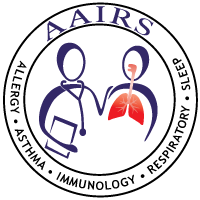Definition
Sarcoidosis is a disease in which inflammation occurs in the lymph nodes, lungs, liver, eyes, skin, or other tissues.
Causes
The exact cause of sarcoidosis is unknown. What is known is that when a person has the disease, tiny clumps of abnormal tissue (granulomas) form in certain organs of the body. Granulomas are clusters of immune cells.
The disease can affect almost any organ of the body. It most commonly affects the lungs.
Doctors think that with sarcoidosis, persons have genes that make it easy for them to develop the disease. Things that may trigger the disease include infections with bacteria or viruses. Contact with dust or chemicals may also be triggers.
The disease is more common in African-Americans and Caucasians of Scandinavian heritage. More women than men have the disease.
The disease often begins between ages 20 and 40. Sarcoidosis is rare in young children.
A person with a close blood relative who has sarcoidosis is nearly five times as likely to develop the condition.
Symptoms
There may be no symptoms. When symptoms occur, they can involve almost any body part or organ system.
Almost all patients have lung or chest symptoms:
- Chest pain (most often behind the breast bone)
- Dry cough
- Shortness of breath
Symptoms of general discomfort:
- Fatigue
- Fever
- Joint ache or pain (arthralgia)
- Weight loss
Skin symptoms:
- Hair loss
- Raised, red, firm skin sores (erythema nodosum), almost always on the front part of the lower legs
- Rash
- Scars that become raised or inflamed
Nervous system symptoms may include:
- Headache
- Seizures
- Weakness on one side of the face
Eye symptoms include:
- Burning
- Discharge from the eye
- Dry eyes
- Itching
- Pain
- Vision loss
Other symptoms of this disease:
- Dry mouth
- Fainting spells if the heart is involved
- Nosebleed
- Swelling in the upper part of the abdomen
A physical exam may show the following:
- Abnormal breath sounds (such as rales)
- Enlarged liver
- Enlarged lymph glands
- Enlarged spleen
- Rash
- Eye inflammation (specialized eye exam is needed)
Often the disease is found in patients with visible physical signs who have an abnormal chest x-ray.
Different imaging tests may help diagnose sarcoidosis:
- Chest x-ray to see if the lungs are involved or lymph nodes are enlarged
- CT scan of the chest
- Lung gallium scan
- Imaging tests of the brain and liver
- Echocardiogram of the heart
To diagnose this condition, a biopsy is needed. Biopsy of the lung using bronchoscopy is usually done. Biopsies of other body tissues may also be done.
The following lab tests may be done:
- Calcium levels (urine, ionized, serum)
- CBC
- Immunoelectrophoresis – serum
- Liver function tests
- Quantitative immunoglobulins (nephelometry)
- Serum phosphorus
- Angiotensin converting enzyme (ACE)
Treatment
Sarcoidosis symptoms will often get better without treatment.
If the eyes, heart, nervous system, or lungs are affected, corticosteroid medicine is usually prescribed. this medicine may need to be taken for 1 to 2 years.
Medicines that suppress the immune system (immunosuppressive medicines) are sometimes also needed.
In rare cases, some persons with very severe heart or lung damage (end-stage disease) may need an organ transplant.
Outlook (Prognosis)
Many people with sarcoidosis are not seriously ill, and they get better without treatment. Up to half of all persons with the disease get better in 3 years without treatment. Persons whose lungs are affected may develop lung damage.
Overall death rate from sarcoidosis is less than 5%. Causes of death include:
- Bleeding from the lung tissue
- Heart damage, leading to heart failure and abnormal heart rhythms
- Lung scarring (pulmonary fibrosis)
- Fungal lung infections (aspergilloma)
- Glaucoma and blindness from uveitis (rare)
- Kidney stones from high calcium levels in blood or urine
- Osteoporosis and other complications of taking corticosteroids for long periods of time.
- High blood pressure in the arteries of the lungs (pulmonary hypertension).
When to Contact a Medical Professional
Call your health care provider promptly if you have:
- Difficulty breathing
- Palpitations
- Vision changes
- Other symptoms of this disorder

